If you’re wondering, “Can I use bigger tires on my car?” the answer is usually, “It depends.” Before you buy that new set of wheels, there are a few things you should know about putting bigger tires on a car.
While there are many benefits of bigger tires, prospective buyers should consider how bigger tires affect vehicle stability, safety, fuel economy, and speedometer accuracy — among other essential pros and cons of upsizing tires on trucks and SUVs.
At Tires Plus, we always recommend that you follow your vehicle manufacturer’s recommendations for tire selection and sizing. However, some motorists choose to slightly deviate from their vehicle’s original tire and wheel size for performance or style purposes.
Plus-sizing involves installing wheels with a larger diameter with a low-profile tire that’s the same diameter as the original — meaning it doesn’t impact ground clearance or the speedometer. In some cases, plus-sizing helps enhance a vehicle’s cornering and handling performance capabilities. However, in most situations, this is purely a stylistic choice. Our expert technicians can help give you guidance on if and how your vehicle’s tires should be plus-sized.
Up-sizing involves deviating from the manufacturer-recommended tire size by installing tires with a larger diameter on wheels that are the same size or bigger. Up-sizing impacts the speedometer, meaning it requires reprogramming the vehicle’s computer.
Additionally, larger tires weigh down the wheel assembly — which may affect fuel economy and place unnecessary stress on the powertrain and brakes. If planned or installed incorrectly, up-sized tires may also rub the wheel well, brake calipers, or vehicle frame, potentially wearing down any parts they grind against.
At Tires Plus, we generally recommend against up-sizing your vehicle’s tires.
It's best to follow your vehicle manufacturer’s guidelines for tire selection and sizing, as right-sized tires help support proper stability and performance. If you decide to change your tires from their original size, make sure that the new tires meet or exceed your vehicle’s load-carrying capacity at the proper inflation pressure, and consider if the taller tires will impact any Advanced Driver Assistance Systems.
If you decide to change your tires from their original size, make sure that the new tires meet or exceed your vehicle’s load-carrying capacity at the proper inflation pressure, and consider if the taller tires will impact any Advanced Driver Assistance Systems.
Additionally, check beforehand that the larger tires you want are compatible with your wheels and rims’ size and that they don’t rub against the calipers or sides of the wheel well.
When you put bigger tires on your car, SUV, crossover, or light truck, you raise the vehicle’s clearance — increasing body roll and load transfer, which may negatively impact your car’s balance and speed.
Perhaps the most significant benefit of larger tires is the extra distance it creates between your car’s undercarriage and the ground. This is particularly important for off-roading enthusiasts who need that extra space to clear rough terrain.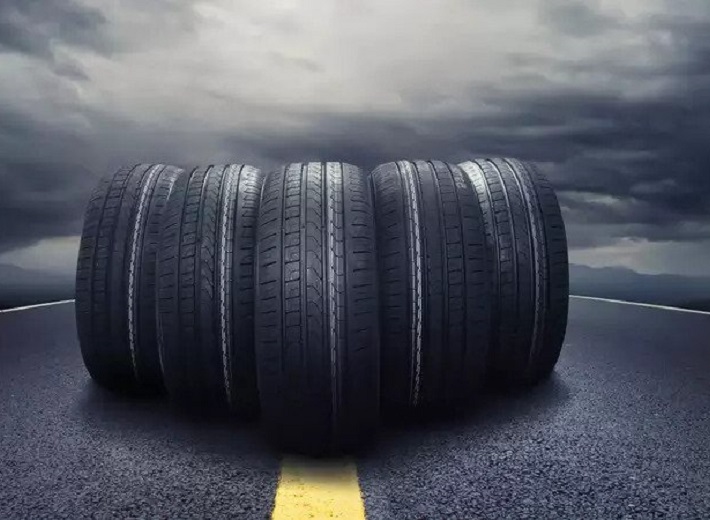
Higher clearance also helps drivers see farther both on and off the road. Depending on your needs, upgrading tire size can mean installing massive 40-inch tires that can traverse boulders or merely adding a few extra inches of diameter.
Up-sizing your truck’s tires is more complicated than just installing larger tires on the wheels and calling it a day. In some cases, you will have to install new wheels that are compatible with your larger tires. If the tires you want are too big for your wheel well, you may have to install a lift or leveling kit to make room for them, which could affect getting proper wheel alignment services in the future.
While new rims and lift kits are often a desirable and trendy addition to bigger tires, they also represent additional costs that you must factor into your decision!
Additionally, a set of bigger tires means you will need to adjust both the speedometer and possibly the tire pressure target data to accurately reflect the correct speed, the corresponding correct miles driven, and any target PSI changes with your new wheels.
There isn't much to change with the TPMS besides swapping it to the new wheels and relearning positions if needed. Only some vehicles allow access to the Electronic Control Module (ECM) to change the tire size in the computer so it reflects on the odometer and speedometer.
Some believe that, because bigger tires result in higher ground clearance, they offer superior off-road handling. However, finding all-terrain or max-traction tires in the right size for your truck or SUV can also benefit its performance off the beaten path. With deeper and broader treads to grip uneven and loose terrain, max traction tires are tough enough to go wherever the trail takes you!
All that extra tire can seriously lower fuel economy. Bigger, more aggressive tires are great for backcountry trails but can be noisy and inefficient on paved roads. A deeper and wider tread can increase your vehicle’s rolling resistance, which means your car has to work harder to overcome the “stickiness” of all that extra traction.
Bigger tires — usually accompanied by bigger rims and higher suspension — are a popular trend among truck drivers. While some people want the off-roading advantages that come with bigger tires, sometimes the big wheels are all about style points. Upgrading your tire size is one way to customize the look and feel of your driving machine.
Naturally, increased height from larger tires means you have a higher center of gravity. This changes the handling of your vehicle by increasing body roll and load transfer. In some cases, you may experience less stability when braking and cornering — especially if traveling at high speeds. Additionally, any changes in ride height and in some alignment angles may result in the Advanced Driver Assistance Systems needing recalibration.
Style points aside, some manufacturer’s will explicitly advise against increasing your vehicle’s tire sizes. Additionally, certain automakers will even void your vehicle’s warranty if you decide to modify its suspension with larger tires and a lift kit.
Additionally, certain automakers will even void your vehicle’s warranty if you decide to modify its suspension with larger tires and a lift kit.
Putting bigger tires on your car will affect your vehicle's average miles per gallon (MPG). There are several reasons larger tires lower fuel economy.
First, bigger tires are usually much heavier. Adding a set of four big and heavy tires to your vehicle will add a lot of new weight. That added weight can hurt your car’s acceleration and expend more fuel. It can also put more strain on your brakes to slow down the vehicle.
Second, wider tires may stick out from the wheel well instead of staying in line with your truck or SUV. This can make your car less aerodynamic and increase fuel usage.
Lastly, as previously mentioned, wider and more aggressive tires have a larger contact patch with the road that can increase rolling resistance.
Modifying your car with larger tires will alter the accuracy of your speedometer. This is because part of the speedometer’s read-out is measured by the revolution of your tires, based on the tire’s circumference.
This is because part of the speedometer’s read-out is measured by the revolution of your tires, based on the tire’s circumference.
When you install bigger tires, if the speedometer is not recalibrated to the new tires’ increased circumference, it will not display the correct speed. You will need a technician to either adjust the speedometer gear or reprogram your vehicle’s computer to compensate for the change in tire size if applicable.
Want to upgrade your vehicle’s tires but not sure where to start? Head to a Tires Plus in your city to talk to our experts about plus-sizing, off-roading tires, and everything in between. We'll help you pick out the right size, type, and tread style for your make and model so you can get the tires you need for the driving experience you've always wanted.
Many drivers give little thought to the sizes of their wheels and tires except for cosmetic purposes. But, wheel size — and the size of tires you put on them — matter. Using improper tires can be costly and sometimes even dangerous.
But, wheel size — and the size of tires you put on them — matter. Using improper tires can be costly and sometimes even dangerous.
Simply put, the larger your tire, the more of a grip your vehicle has on the road. As a tire's width increases, it covers more surface area on the road. According to iSee Cars, this increase in contact with the pavement gives your vehicle more to hold onto, increasing its handling and ability to maneuver.
So, does tire size really matter? The short answer is: Yes. But does wheel size matter? It depends.
Wheels and tires are not interchangeable words. Tires are a part of the wheel setup. For instance, your vehicle has a set size of rims, but you can buy different sizes of tires to fit those rims, as long as the middle of the tires is the correct size. That being said, a vehicle with bigger rims will often be able to fit larger tires than other vehicles.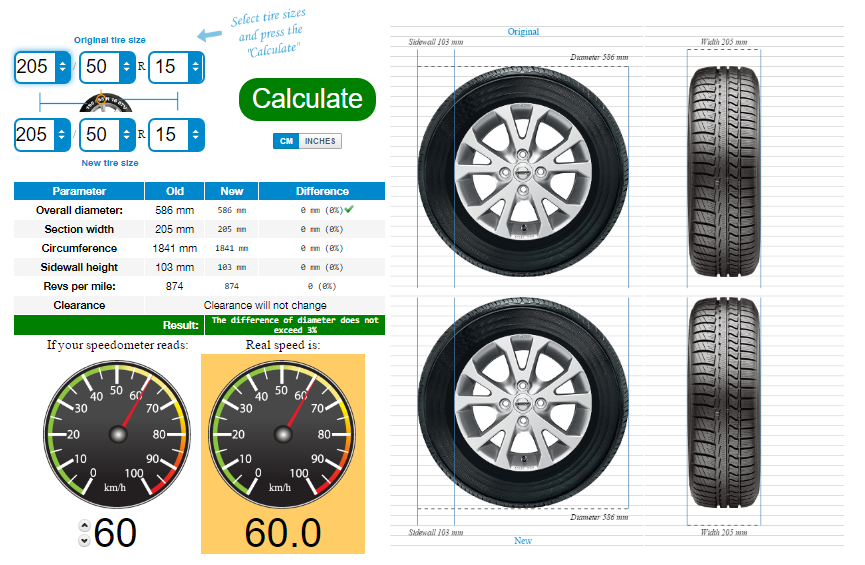
Overall, bigger tires and wheels are better for increasing your vehicle's traction. However, bigger tires also mean bigger price tags, according to Consumer Reports. Try to find the best balance between size and your budget. If you opt for larger wheels when you purchase your vehicle, you may not see this rise in price at first, but when you have to replace the larger wheels and tires, you will have a higher cost of replacement than someone driving a vehicle with smaller wheels.
Once you choose a tire size for your vehicle, you'll want to stick with that size when you buy replacements. The reason for this is that a differently sized tire can confuse your speedometer and even cause damage to your vehicle's anti-lock braking systems and stability system calibrations. This applies to switching to both smaller and larger tires. Changing to larger tires with an improper sidewall height can cause damage to your vehicle's suspension system, wheels, and the tires themselves, and can run the risk of incorrect speedometer readings.
However, if you match larger-diameter wheel sizes to lower-profile tire sizes, your speedometer and odometer shouldn't see any changes. This setup means your tires have shorter sidewalls, which means stiffer sidewalls, and a higher chance for blowouts should you hit a pothole.
When you replace your tires, try to stick with the same brand and size, as mixing and matching leaves your vehicle with different tire threads, which can cause spinouts and control loss.
The average driver may not know exactly what they are looking for when they shop for new tires, but as long as you keep a few fundamental rules in mind, replacing tires and rims is easy.
When you look for new tires, you'll come across size names such as 235/75R15 or P215/65R15. These labels can be confusing if you're not sure how to read them, but once you learn the language of tires, they become more clear.
On the left side of the slash symbol, you'll find three numbers and sometimes letters. The numbers represent how wide the tires are, in millimeters, from sidewall to sidewall. The bigger this number is, the more road the tire touches.
If you see a letter on the left side, it refers to the tire type. Letters you might see are:
Using a P215/65R15-size tire as an example, we can tell that the tire is for a passenger vehicle and has a 215-millimeter width.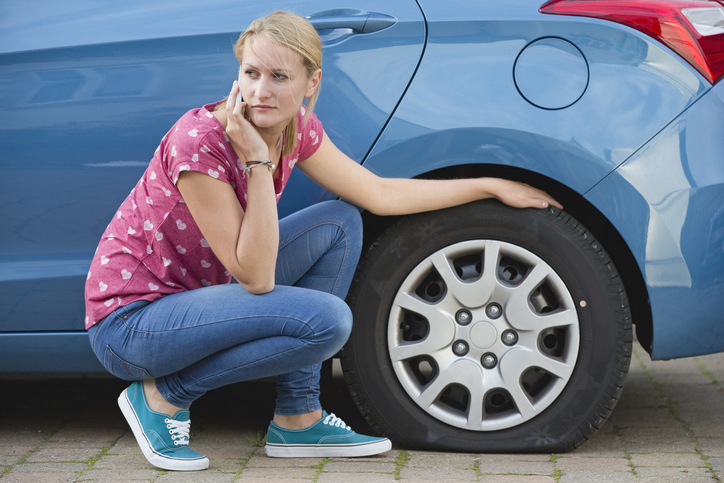
On the right side of the slash symbol, you'll find two numbers, a letter, and two more numbers. The first set of numbers represents the aspect ratio of the tire's height to its width. In our P215/65R15 example, those numbers are 65, which means the tire's sidewall height is 65% as large as the tire's width. The middle letter on the right side of the slash tells you about the tire's construction method and will most commonly be "R," or radial. This means the layers of the tire run radially across it.
The last number is important, as it tells you what size wheel the tire fits. In our example, this number is 15, which means the tire fits a wheel with a 15-inch diameter.
 The reason this works is that the rear wheels don't have to turn like the front wheels do.
The reason this works is that the rear wheels don't have to turn like the front wheels do.Wheels and tires are important components of your vehicle. Though that may seem a little obvious, many drivers don't give a second thought to the tires they choose for the cars, which can lead to many unwanted problems. Know your car and avoid making dire tire mistakes to ensure your wheels are safe and are giving your vehicle the best levels of traction possible.
Sources:
https://www. tsw.com/explore-tsw-custom-wheels/staggered-wheels-rims.php
tsw.com/explore-tsw-custom-wheels/staggered-wheels-rims.php
https://www.caranddriver.com/features/a16580427/how-to-read-a-tire-sidewall/
https://www.consumerreports.org/cro/news/2012/11/why-car-tire-prices-vary/index.htm
https://www.iseecars.com/articles/does-tire-size-really-matter
The issue of selecting tires for disks has always been relevant for motorists, since every self-respecting driver needs to know certain parameters. If the characteristics are not known and these parameters are not followed, the car will experience a significant deterioration in performance, which seriously threatens safety.
In order to match rubber to the wheels as accurately as possible, you should first study the marking of the wheels:
Wheel marking with dimensions R13 4x98 ET35 J5 D58.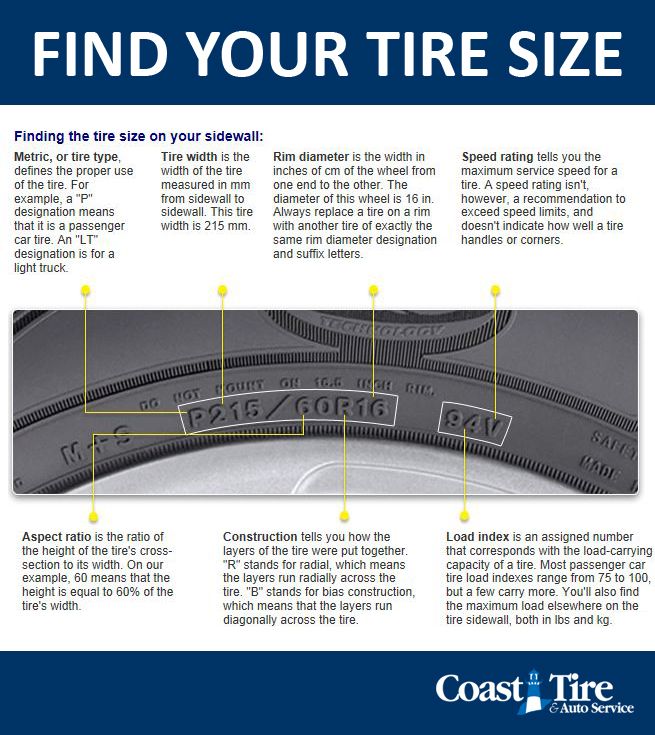 6
6
It is the latter that plays a major role in matching tires and wheels. In order to choose the right wheels for tires on passenger cars, you can use the table compiled by the specialists of Avtotire Kom. Or you can use the selection of discs for the car by clicking on the link .
Tire/Rim Matching Chart
| Disc diameter | Tire size | Wheel rim width (inches) | ||
| Minimum | Recommended | Maximum | ||
| 13" | 135/80R13 | 3.5 | 3.5 | 4.5 |
| 145/80R13 | 3.5 | 4 | 5 | |
| 155/80R13 | 3 | 4. 5 5 | 5 | |
| 165/80R13 | 4 | 4.5 | 5.5 | |
| 165R13 | 4.5 | 5 | 6 | |
| 14" | 175/80R14 | 4.5 | 5 | 6 |
| 185/80R14 | 4.5 | 5 | 6 | |
| 13" | 135/70R13 | 3.5 | 4 | 4.5 |
| 145/70R13 | 3.5 | 4.5 | 5 | |
| 155/70R13 | 4 | 4.5 | 5 | |
| 165/70R13 | 4 | 5 | 5. 5 5 | |
| 175/70R13 | 4.5 | 5 | 6 | |
| 185/70R13 | 4.5 | 5.5 | 6 | |
| 14" | 165/70R14 | 4 | 5 | 5.5 |
| 175/70R14 | 4.5 | 5 | 6 | |
| 185/70R14 | 4.5 | 5.5 | 6 | |
| 195/70R14 | 5 | 6 | 6.5 | |
| 13" | 155/65R13 | 4.5 | 4.5 | 5.5 |
| 165/65R13 | 4.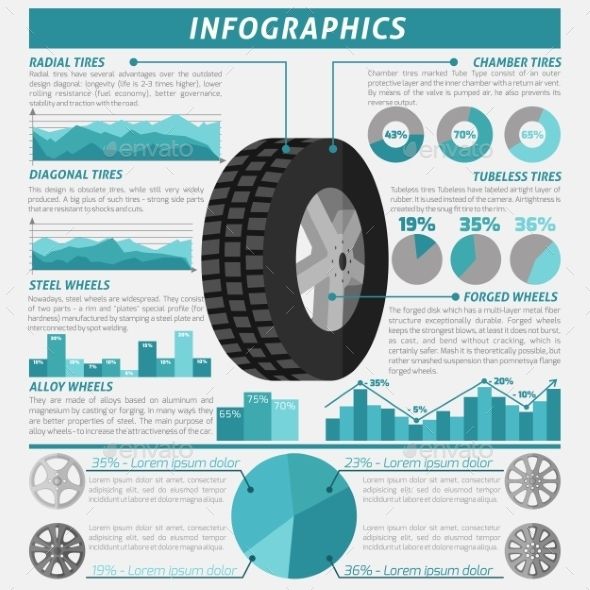 5 5 | 5 | 6 | |
| 175/65R13 | 5 | 5 | 6 | |
| 14" | 155/65R14 | 4.5 | 4.5 | 5.5 |
| 165/65R14 | 4.5 | 5 | 6 | |
| 175/65R14 | 5 | 5 | 6 | |
| 185/65R14 | 5 | 5.5 | 6.5 | |
| 195/65R14 | 5.5 | 6 | 7 | |
| 15" | 145/65R15 | 4 | 4.5 | 5 |
| 155/65R15 | 4.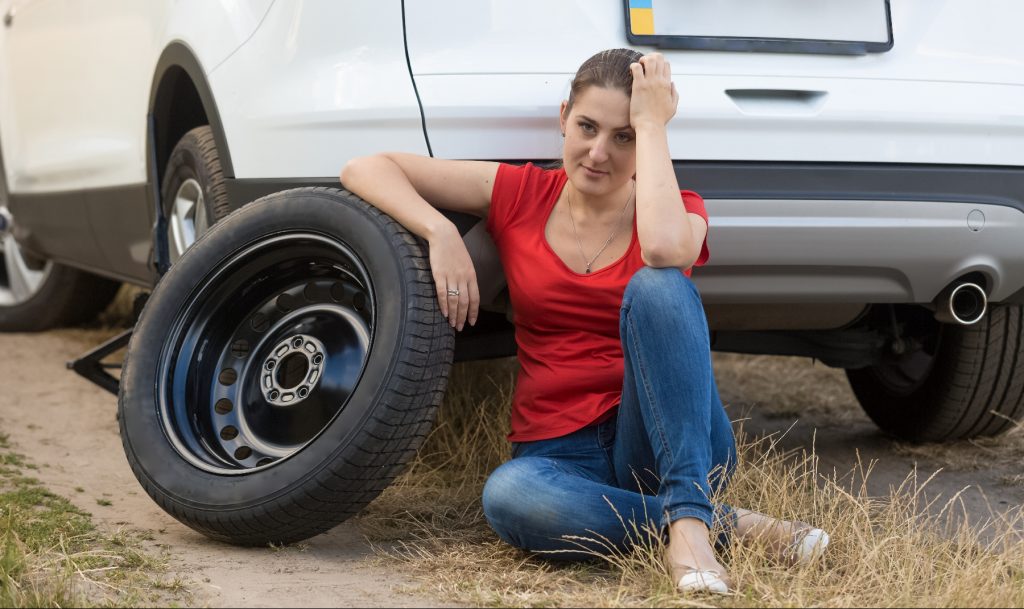 5 5 | 4.5 | 5 | |
| 165/65R15 | 4.5 | 5 | 6 | |
| 175/65R15 | 5 | 5 | 6 | |
| 185/65R15 | 5 | 5.5 | 6.5 | |
| 195/65R15 | 5.5 | 6 | 7 | |
| 205/65R15 | 5.5 | 6 | 7.5 | |
| 215/65R15 | 6 | 6.5 | 7.5 | |
| 16" | 215/65R16 | 6 | 6.5 | 7.5 |
| 17" | 235/65R17 | 6.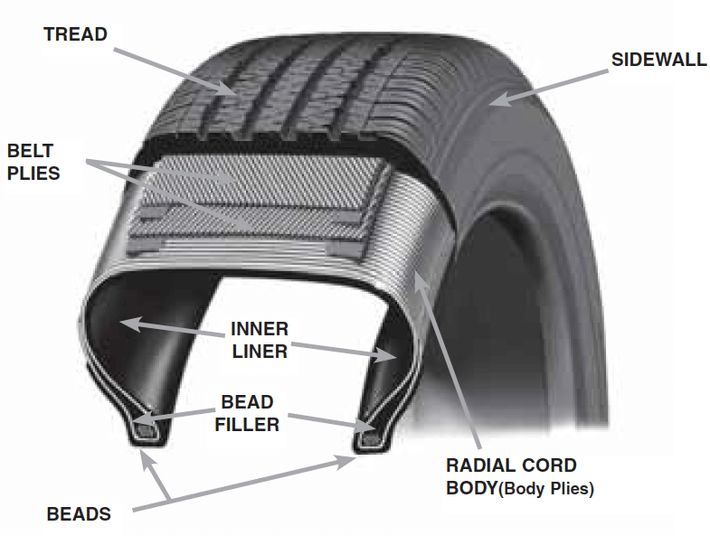 5 5 | 7 | 8.5 |
| 18" | 235/65R18 | 6.5 | 7 | 8.5 |
| 14" | 165/60R14 | 4.5 | 5 | 6 |
| 175/60R14 | 5 | 5 | 6 | |
| 185/60R14 | 5 | 5.5 | 6.5 | |
| 195/60R14 | 5.5 | 6 | 7 | |
| 15" | 175/60R15 | 5 | 5 | 6 |
| 185/60R15 | 5 | 5. 5 5 | 6.5 | |
| 195/60R15 | 5.5 | 6 | 7 | |
| 205/60R15 | 5.5 | 6 | 7.5 | |
| 225/60R15 | 6 | 6.5 | 8 | |
| 16" | 205/60R16 | 5.5 | 6 | 7.5 |
| 215/60R16 | 6 | 6.5 | 7.5 | |
| 225/60R16 | 6 | 6.5 | 8 | |
| 235/60R16 | 6.5 | 7 | 8.5 | |
| 17" | 225/60R17 | 6 | 6.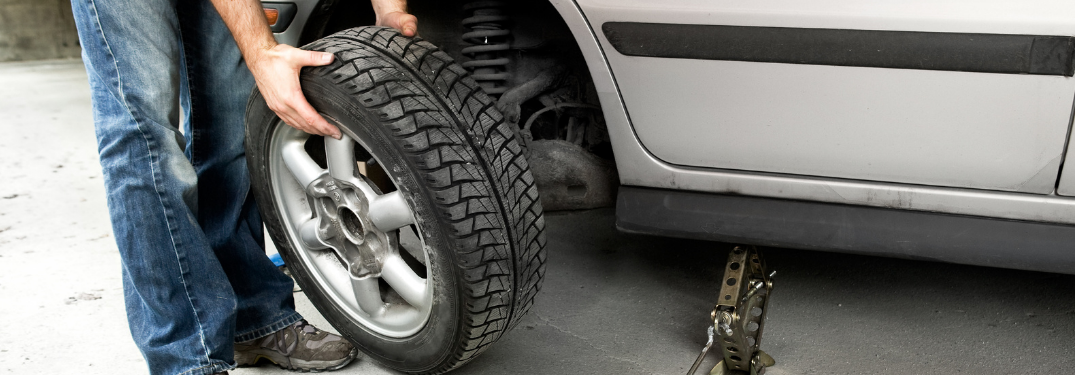 5 5 | 8 |
| 14" | 185/55R14 | 5 | 6 | 6.5 |
| 15" | 175/55R15 | 5 | 5.5 | 6 |
| 185/55R15 | 5 | 6 | 6.5 | |
| 195/55R15 | 5.5 | 6 | 7 | |
| 205/55R15 | 5.5 | 6.5 | 7.5 | |
| 225/55R15 | 6 | 7 | 8 | |
| 16" | 195/55R16 | 5.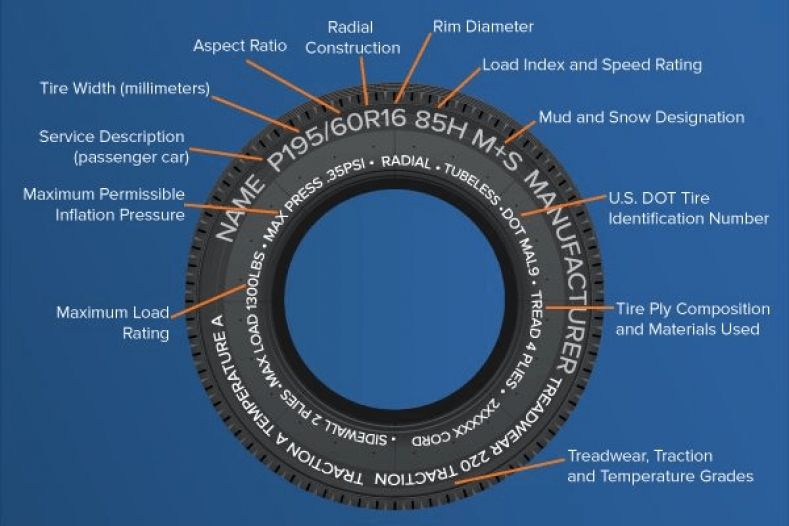 5 5 | 6 | 7 |
| 205/55R16 | 5.5 | 6.5 | 7.5 | |
| 215/55R16 | 6 | 7 | 7.5 | |
| 225/55R16 | 6 | 7 | 8 | |
| 245/55R16 | 7 | 7.5 | 8.5 | |
| 17" | 205/55R17 | 5.5 | 6.5 | 7.5 |
| 215/55R17 | 6 | 7 | 7.5 | |
| 225/55R17 | 6 | 7 | 8 | |
| 235/55R17 | 6.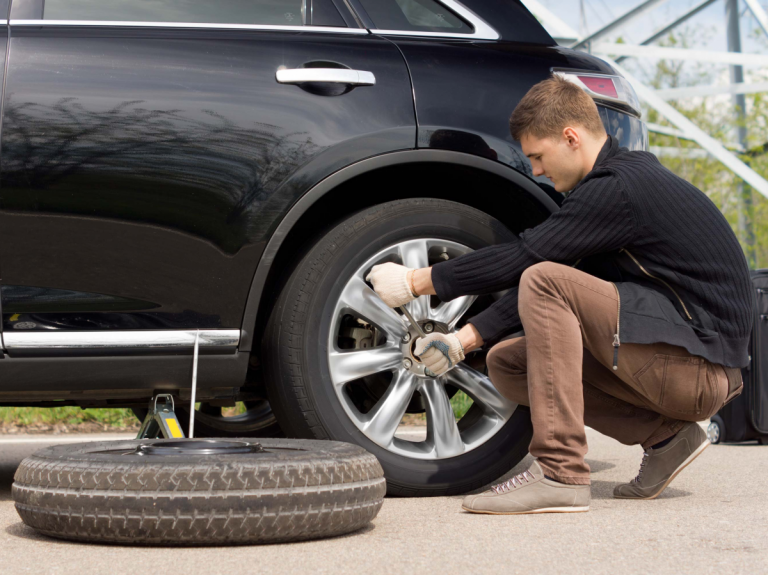 5 5 | 7.5 | 8.5 | |
| 245/55R17 | 7 | 7.5 | 8.5 | |
| 255/55R17 | 7 | 8 | 9 | |
| 15" | 195/50R15 | 5.5 | 6 | 7 |
| 205/50R15 | 5.5 | 6.5 | 7.5 | |
| 225/50R15 | 6 | 7 | 8 | |
| 16" | 185/50R16 | 5 | 6 | 6.5 |
| 195/50R16 | 5.5 | 6 | 7 | |
| 205/50R16 | 5.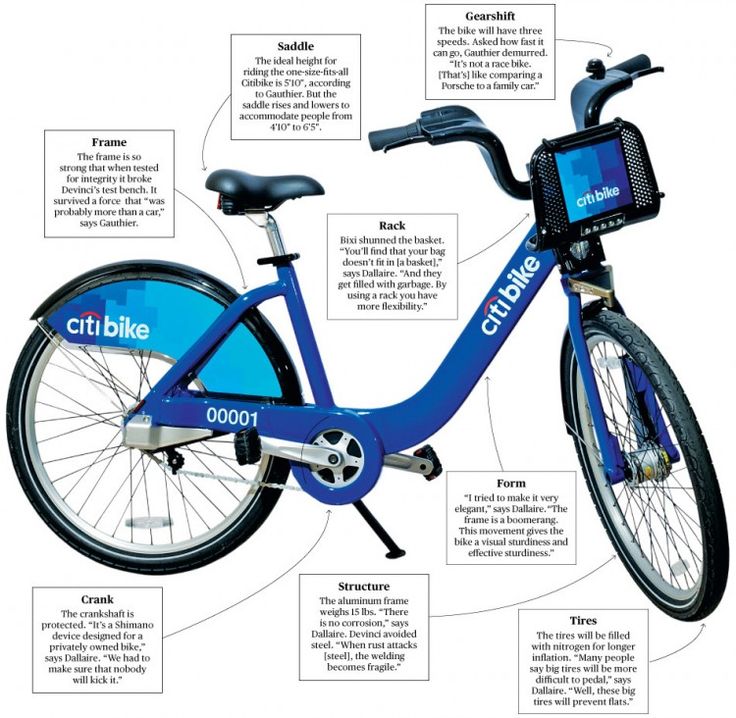 5 5 | 6.5 | 7.5 | |
| 215/50R16 | 6 | 7 | 7.5 | |
| 225/50R16 | 6 | 7 | 8 | |
| 235/50R16 | 6.5 | 7.5 | 8.5 | |
| 245/50R16 | 7 | 7.5 | 8.5 | |
| 255/50R16 | 7 | 8 | 9 | |
| 17" | 205/50R17 | 5.5 | 6.5 | 7.5 |
| 215/50R17 | 6 | 7 | 7.5 | |
| 225/50R17 | 6 | 7 | 8 | |
| 235/50R17 | 6.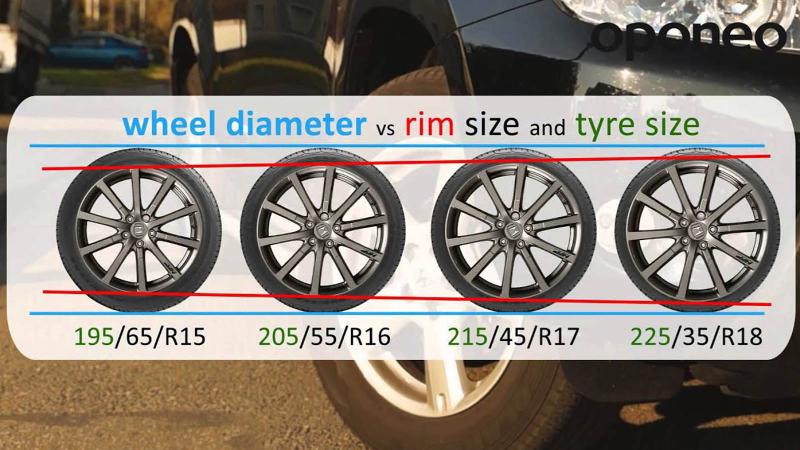 5 5 | 7.5 | 8.5 | |
| 18" | 235/50R18 | 6.5 | 7.5 | 8.5 |
| 245/50R18 | 7 | 7.5 | 8.5 | |
| 19" | 275/50R19 | 7.5 | 8.5 | 9.5 |
| 15" | 195/45R15 | 6 | 6.5 | 7.5 |
| 16" | 195/45R16 | 6 | 6.5 | 7.5 |
| 205/45R16 | 6.5 | 7 | 7.5 | |
| 215/45R16 | 7 | 7 | 8 | |
| 225/45R16 | 7 | 7. 5 5 | 8.5 | |
| 245/45R16 | 7.5 | 8 | 9 | |
| 17" | 205/45R17 | 6.5 | 7 | 7.5 |
| 215/45R17 | 7 | 7 | 8 | |
| 225/45R17 | 7 | 7.5 | 8.5 | |
| 235/45R17 | 7.5 | 8 | 9 | |
| 245/45R17 | 7.5 | 8 | 9 | |
| 255/45R17 | 8 | 8.5 | 9.5 | |
| 18" | 215/45R18 | 7 | 7 | 8 |
| 225/45R18 | 7 | 7. 5 5 | 8.5 | |
| 235/45R18 | 7.5 | 8 | 9 | |
| 245/45R18 | 7.5 | 8 | 9 | |
| 255/45R18 | 8 | 8.5 | 9.5 | |
| 275/45R18 | 8.5 | 9 | 10.5 | |
| 19" | 245/45R19 | 7.5 | 8 | 9 |
| 20" | 275/45R20 | 8.5 | 9 | 10.5 |
| 16" | 215/40R16 | 7 | 7.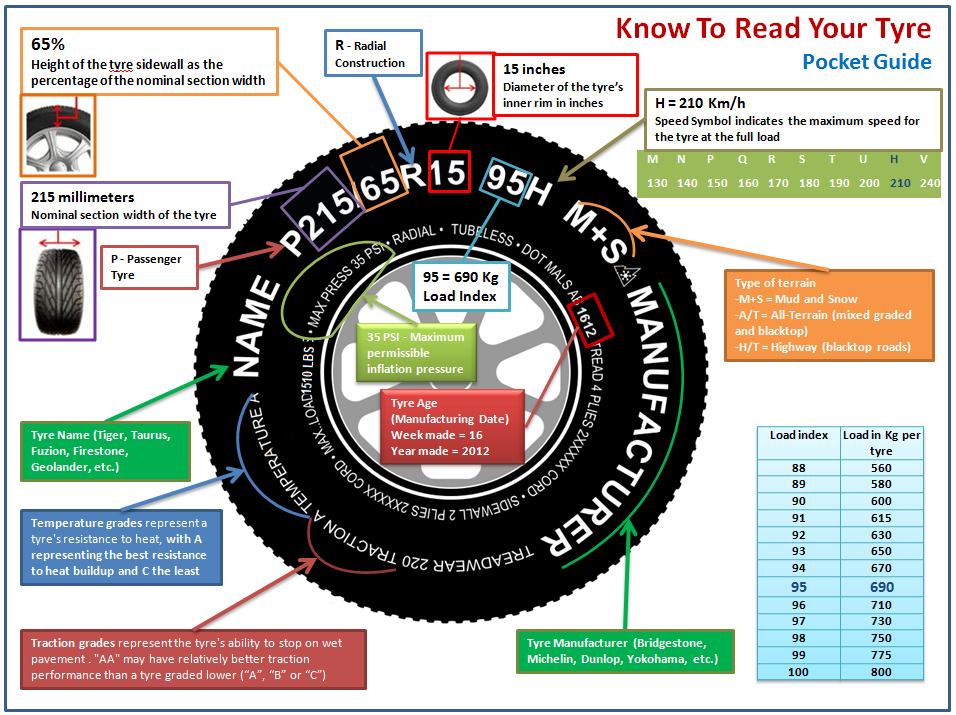 5 5 | 8.5 |
| 17" | 205/40R17 | 7 | 7.5 | 8 |
| 215/40R17 | 7 | 7.5 | 8.5 | |
| 235/40R17 | 8 | 8.5 | 9.5 | |
| 245/40R17 | 8 | 8.5 | 9.5 | |
| 255/40R17 | 8.5 | 9 | 10 | |
| 265/40R17 | 9 | 9.5 | 10.5 | |
| 275/40R17 | 9 | 9.5 | 11 | |
| 285/40R17 | 9 | 10 | 11 | |
| 18" | 205/40R18 | 7 | 7. 5 5 | 8 |
| 225/40R18 | 7.5 | 8 | 9 | |
| 235/40R18 | 8 | 8.5 | 9.5 | |
| 245/40R18 | 8 | 8.5 | 9.5 | |
| 255/40R18 | 8.5 | 9 | 10 | |
| 265/40R18 | 9 | 9.5 | 10.5 | |
| 275/40R18 | 9 | 9.5 | 11 | |
| 285/40R18 | 9.5 | 10 | 11 | |
| 19" | 225/40R19 | 7.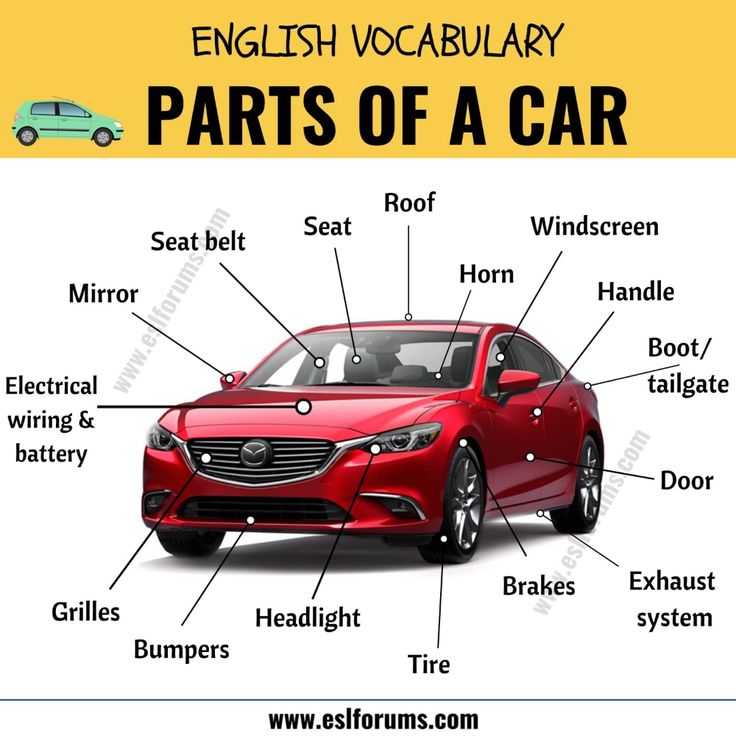 5 5 | 8 | 9 |
| 245/40R19 | 8 | 8.5 | 9.5 | |
| 255/40R19 | 8.5 | 9 | 10 | |
| 275/40R19 | 9 | 9.5 | 11 | |
| 20" | 245/40R20 | 8 | 8.5 | 9.5 |
| 17" | 225/35R17 | 7.5 | 8 | 9 |
| 265/35R17 | 9 | 9.5 | 10.5 | |
| 335/35R17 | 11 | 12 | 13 | |
| 18" | 215/35R18 | 7 | 7. 5 5 | 8.5 |
| 225/35R18 | 7.5 | 8 | 9 | |
| 235/35R18 | 8 | 8.5 | 9.5 | |
| 255/35R18 | 8.5 | 9 | 10 | |
| 265/35R18 | 9 | 9.5 | 10.5 | |
| 275/35R18 | 9 | 9.5 | 11 | |
| 285/35R18 | 9.5 | 10 | 11 | |
| 295/35R18 | 10 | 10.5 | 11.5 | |
| 345/35R18 | 11. 5 5 | 12 | 13.5 | |
| 19" | 225/35R19 | 7.5 | 8 | 9 |
| 235/35R19 | 8 | 8.5 | 9.5 | |
| 245/35R19 | 8 | 8.5 | 9.5 | |
| 255/35R19 | 8.5 | 9 | 10 | |
| 265/35R19 | 9 | 9.5 | 10.5 | |
| 275/35R19 | 9 | 9.5 | 11 | |
| 285/35R19 | 9.5 | 10 | 11 | |
| 295/35R19 | 10 | 10. 5 5 | 11.5 | |
| 20" | 245/35R20 | 8 | 8.5 | 9.5 |
| 255/35R20 | 8.5 | 9 | 10 | |
| 275/35R20 | 9 | 9.5 | 11 | |
| 21" | 245/35R21 | 8 | 8.5 | 9.5 |
| 255/35R21 | 8.5 | 9 | 10 | |
| 18" | 285/30R18 | 9.5 | 10 | 10.5 |
| 295/30R18 | 10 | 10.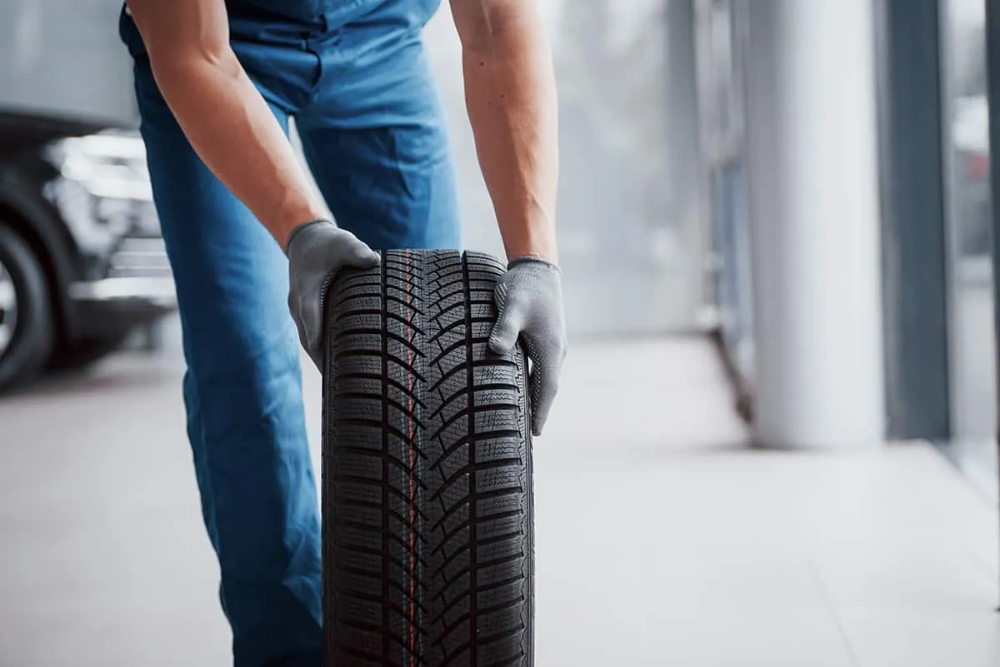 5 5 | 11 | |
| 315/30R18 | 10.5 | 11 | 11.5 | |
| 335/30R18 | 11.5 | 12 | 12.5 | |
| 345/30R18 | 11.5 | 12 | 12.5 | |
| 19" | 265/30R19 | 9 | 9.5 | 10 |
| 275/30R19 | 9 | 9.5 | 10 | |
| 285/30R19 | 9.5 | 10 | 10.5 | |
| 295/30R19 | 10 | 10.5 | 11 | |
| 305/30R19 | 10.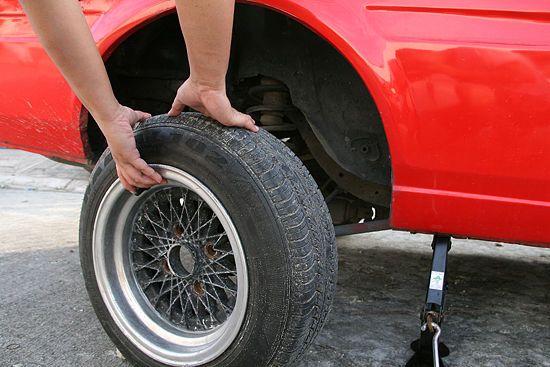 5 5 | 11 | 11.5 | |
| 345/30R19 | 11.5 | 12 | 12.5 | |
| 20" | 235/30R20 | 8.5 | 8.5 | 9.5 |
| 245/30R20 | 8.5 | 8.5 | 9.5 | |
| 255/30R20 | 9 | 9 | 10 | |
| 285/30R20 | 10 | 10 | 11 | |
| 335/30R20 | 12 | 12 | 13 | |
| 21" | 255/30R21 | 9 | 9 | 10 |
| 285/30R21 | 10 | 10 | 11 | |
| 295/30R21 | 10 | 10. 5 5 | 11 | |
| 22" | 255/30R22 | 9 | 9 | 10 |
| 19" | 315/25R19 | 11 | 11.5 | 12 |
| 20" | 285/25R20 | 10.5 | ||
| 295/25R20 | 10 | 10.5 | 11 | |
| 325/25R20 | 11.5 | 12 | 12.5 | |
| 21" | 295/25R21 | 10 | 10.5 | 11 |
| 22" | 295/25R22 | 10 | 10. 5 5 | 11 |
| How do tires save fuel? When we think about improving fuel efficiency, we often focus on the engine, the car's aerodynamics, or its weight. However, we often overlook one.. 04 April 2023, 13:54 | |
| What does the snowflake on the tire mean? The snowflake on a tire (3PMSF marking) is a special marking for models that have been tested on snow and are able to meet the minimum requirements for driving safety on a.. January 06, 2023, 11:08 | |
| Worn tires are more dangerous than drunk driving A new study has found that worn tires are more dangerous than drunk driving. It has been found that driving a vehicle with tires that have an approved tread depth of 1. 26 December 2022, 11:02 | |
| Tire labels - how to read? From November 1, 2012, tires sold in countries within the European Union must have special stickers. They contain information, in particular, about the fuel.. July 11, 2022, 11:34 | |
| Causes of tire wear Tire wear is often the result of too much speed at which we move. However, there are many more factors influencing this process. Tire condition during .. 04 July 2022, 11:58 | |
Konstantin Ishchenko
distinguishes the radius from the diameter
They say that wheels are half the appearance of the car. But it's not just about beauty.
Wheels connect the car to the road and greatly affect its handling. Not only tire parameters and their quality are important, but also disks. From this article, you will learn what rims are, how they differ, and learn how to understand their parameters. With this knowledge, it will be easier to choose wheels for your car.
The names of the types of rims are associated with the technology of their manufacture. Each of them has its own properties, advantages and disadvantages.
forged discs are made from sheet steel with minimal waste.
Advantages:
Disadvantages:
To make these rims more attractive, drivers put plastic caps on them. The original caps are made of durable plastic, they hold well on the disc. They are specially made for automakers. Non-original ones are more fragile, easily fly off the disk, but the kit can be bought at the hypermarket for 1000-1500 R.
/carservice/
How to save on the operation of the machine
In any case, it is better to fix the caps with plastic ties. Non-original ones need to be fixed so that they just hold on. Original ones - so as not to lose them on the road if the wheel is flat and the cap comes off the disk.
Cast, they are light alloy, wheels are most often made of aluminum. They owe their name to a technology in which molten metal is poured into a special mold.
Benefits:
Disadvantages:
There are many manufacturers of alloy wheels. There are well-known brands with a history: their products are stronger and lighter, but more expensive. Original wheels for many cars are made by such manufacturers.
What to do? 21.02.20
Wheels scratched on my car in a car service
A lot of alloy wheels are made in China, the quality can be very mediocre. Often these are exact copies of the original discs. The popular name is "replica". The disk will be heavier, and it may not be able to cope with the load and crack. We do not recommend putting Chinese copies of original wheels on a crossover or on a frame SUV - this is dangerous.
forged wheels are made from special blanks that are approximately 95% aluminum and undergo several heat treatments. This is how the aluminum alloy changes its structure and becomes as strong as possible. The shape of the disk is given by a CNC milling machine: the disk is cut out of the workpiece according to a specially specified program.
Advantages:
Disadvantages:
Assembly discs are the most technologically sophisticated type. The disk can consist of two or three parts, which are connected with high-strength bolts.
Advantages:
Drawbacks:
Wheels have a set of parameters that fully describe their properties. For example, you can buy Volvo wheels at Ford or pick up something non-original at the car market. The main thing is that the characteristics are suitable, then the disk will fit perfectly into place. Here's what you need to know.
Number and diameter of mounting holes - PCD, from the English Pitch Circle Diameter. But people usually say "bolt" or "drill". The rim is attached to the vehicle hub using bolts or studs with nuts. The number of holes on the disk and the distance between them are unified. PCD is denoted in the format 4 × 100, where 4 is the number of holes in the disk for bolts or studs, and 100 is the diameter of the circle along which the holes are located.
Most common PCD - 4 x 98; 4 × 100; 4 × 108; 4 × 114.3; 5 × 100; 5 × 112; 5 × 114.3; 5 × 120. Minibuses and large jeeps can have 6 holes on the disc, cars almost never have this.
Many automakers have historically settled on one or two PCD options. Concern VAG - 5 × 112, Japanese brands - 4 × 114.3 or 5 × 114.3, French - 4 × 108. Source: avto-kul.ruDiameter of the central hole - DIA, from the English Diameter. In Russian - the central hole (CH). Measured in millimeters, there is no single standard. If the bolt pattern is universal for the whole concern, then the diameter of the central hole can be different even for models of the same brand that were produced at the same time.
The hole must be perfectly aligned with the special lug on the hub so that the disc fits perfectly into place. If the hole is larger than the protrusion on the hub, you can put a centering ring. If less, it will not be possible to install the disk on the hub.
Hub with studs, in this case the wheel is fixed with nuts.Mounting diameter is the fit size of the tire that fits the disk. Measured in inches, only strict correspondence is possible between the tire and the disk. For example, if the bus parameters are 195/65 R15, then it can only be mounted on a disk with a diameter of 15 inches. Usually the word "mounting" is not used and is reduced to "disk diameter".
Wheel width - the distance between the seats under the tire. They measure in inches, but in the marking it is just a number. Usually the designation is on one of the spokes of the disk from the inside or on a sticker inside the rim.
There is a relationship between the width of the rim and the width of the tire: you cannot put a narrow tire on a wide rim and vice versa. In order not to make a mistake and compare the width of the disk with the width of the tire, use the tire-disk calculator.
The profile of the side of the disk is denoted by the Latin letters J, JJ, K, JK, B, P and D.
The most common option is J, occasionally you can find JJ, K and JK. In the marking, this parameter is written immediately after the width of the disk: for example, 7.5J.
Profile B - for rims up to 13 inches. Differences between J and JJ profiles are minimalDisc offset - OFFSET or ET, measured in millimeters. This is the distance from the place where the disc is attached to the hub to the center line of the disc. The standard offset for the car model ensures optimal load on the wheel bearing and shock absorber. A disc with such an overhang will stand in the arch as it should be: the inner part of the disc will not catch on anything, the outer one will be slightly recessed relative to the edge of the car wing.
If the offset of the disc is significantly reduced relative to the standard one, the wheel will either line up with the arch or begin to protrude from it. A car with such discs will get dirty much faster: with a smaller offset, much more dirt will fly onto the doors and side windows than with a standard one. But this is the best case. At worst, the tire will start rubbing against the fender. With such a defect, it is dangerous to drive on public roads.
Longer offset will further sink the wheel into the arch. In this case, it is important to prevent the disc from touching the caliper, and the rubber from the fender liner and suspension parts. With such a defect, it is also dangerous to drive on public roads.
If you deviate from the offset recommended by the car manufacturer within 5 mm, nothing bad will happen: the life of the wheel bearing will not be reduced, the caliper will not catch on the disc from the back side, the rubber will not rub against anything. There will also be no significant visual changes.
/guide/rezina/
How to choose tires for a car or crossover
The smaller the offset, the farther the outer rim of the wheel is from the hub.The shape and size of the fixing holes can be a cone or a hemisphere. The second option is less common, if you doubt the choice of fasteners, contact the specialists. The shape does not depend on the type of disc mounting: the cone and hemisphere can be on both bolts and nuts. It is important not to make a mistake with fasteners, this affects safety.
Most machines have wheel bolts and studs with M12 and M14 threads. The first option is for wheels with narrow holes. But, if the holes are standard, you can use both fastener options.
You can find out what shape the hole is only when inspecting the disk, manufacturers do not designate this parameter. On the left is a “cone” type bolt, on the right is a “hemisphere”. If the bolts have to be changed for the sake of new discs, this will not greatly affect the budget. Not necessarily sports - such brakes are installed, for example, on the Audi Q5.Complete marking. Sellers and manufacturers of rims write markings in different ways - there is no single standard, but it's easy to figure it out.
/guide/kolodki/
Brake pads: why you need them, how to choose the right one and when to change them
Examples of rim markings and their interpretation:
First, it is important to understand what task the rims will solve. It can be another seasonal wheel change kit, an off-road kit, a beauty kit, or something else that you could leave the car on for a long body repair. This will determine the search tactics, as well as the parameters of the disk set.
How to select parameters. Look for wheels with specifications recommended by the car manufacturer. They are easy to find on the Internet, but you need to be careful. It is important to take into account the year of manufacture of the car and its generation. Google at the request "wheel parameters for Volkswagen Golf" will show wheels for both the second generation Golf and the sixth, and you were looking for the fourth. For some machines, disk parameters are indicated in the operating instructions.
If you want to buy wheels with other parameters, for example, to put the wheels wider, use the tire-wheel calculator. You can almost always pick something up, but such solutions are not always reliable and do not always have a positive effect on driving performance.
/guide/shina-s-probegom/
How to buy used tires for a passenger car
| Parameter that does not fit | What to do |
|---|---|
| Outlet/ET | Enlarge - with wheel spacer, reduce - no way |
| Razbolt / PCD | Use eccentric bolts - a possible, but not the safest solution, it is better to use a special spacer |
| Center hole / DIA | Increase - in a special service for discs, reduce - with the help of a centering ring |
| Disc width | If the width differs from the original parameters by an inch and a half - look for a new disk |
| Bolt hole shape | Buy bolts or nuts of the desired shape |
| Diameter | Look for another disk |
Parameter that does not fit
What to do
Offset / ET
Increase - with a wheel spacer, reduce - no way
Looseness / PCD
not the safest possible solution - bolts it is better to use a special spacer
Center hole / DIA
Increase - in a special wheel service, reduce - with a centering ring
Wheel width
If the width differs from the original parameters by an inch and a half - look for a new wheel
Bolt hole shape
Buy bolts or nuts of the desired shape
Diameter
Look for another wheel
Spacers, with which they reduce wheel offset.How to choose a manufacturer. Well-known firms have fakes, which cannot be distinguished without experience. The only way out is to watch YouTube videos comparing a branded disc with a fake one. If in doubt, stop buying.
The best option is original discs, including used ones. But, if you have little experience, try to buy new ones. Of the budget options, you can consider domestic manufacturers, forged wheels are especially pleasing: they are not faked, and the properties are excellent.
Disc magazines. Start with large chain stores. As a rule, they also sell tires - it will be easier to assemble a set. In such stores, you can get good advice and roughly understand the price of a disc with the desired parameters. If you plan to buy wheels online, make sure they fit your car - ask the seller about it.
Amazing story 08/21/17
The driver was fined because of a broken wheel. And took away the rights
Professional sellers. As with used tyres, the market for used rims is huge. They can be brought from Japan and then sold at Droma or Farpost. In terms of content and design, this is one and the same site.
Avito also has large disc stores. When buying remotely on Internet sites, we recommend choosing professional sellers with reviews. Do not neglect the guarantees from the site itself when buying in another city: Drome and Farpost offer a safe deal. With such a purchase, lots can be paid by card, the seller will receive the money only after the buyer receives the goods.
Avito has worse protection for disc buyers. The secure transaction service "Avito-delivery" does not work with such large loads as rims. Even if they are accepted and agreed to be sent, the delivery will be very expensive.
Private sellers is a category with which it is important to be especially vigilant. When buying used discs online, carefully inspect them for bends and cracks.
It is important to check the wheels at the tire shop before you transfer the money to the seller. The workshop specialist will fix each disc on the balancing machine, start it up and immediately tell you whether to buy discs or not. In some cases, a visually excellent disk may be irreparably crooked and unusable.
/save/koleso-hack/
How to save on buying car tires and wheels?
Particularly cunning sellers do a real pre-sale preparation of discs - they hide cosmetic defects with a minimum investment. They can putty a damaged disc, spray-paint it, and pass it off as a quality product. The disc may have traces of welds: this means that the disc had serious damage.